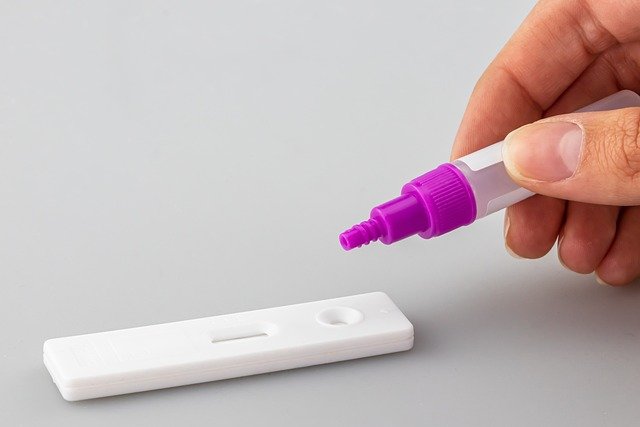Step-by-step guide to material sampling and lab analysis
Material sampling and lab testing are central to assessing potential asbestos risks in buildings. This concise overview highlights key steps from inspections and sample collection to accredited laboratory analysis and practical monitoring for containment and remediation planning.

A structured approach to material sampling and lab testing reduces uncertainty and improves safety when asbestos is suspected. This article outlines practical steps for inspections, representative sampling, accredited laboratory diagnostics, air quality monitoring, and how results inform containment, remediation, and regulatory compliance. The guidance is intended for building managers, environmental professionals, contractors, and concerned property owners seeking clear processes for assessment and monitoring.
This article is for informational purposes only and should not be considered medical advice. Please consult a qualified healthcare professional for personalized guidance and treatment.
Inspections and assessment
Begin with a thorough visual inspection and review of building records to identify suspect materials and likely disturbance zones. Document locations, material types (for example pipe insulation, floor tiles, roofing felt), appearance, and any damage. Photographs, sketches, and annotated floor plans help pinpoint sampling sites. A risk-based assessment considers the likelihood of fiber release, occupancy patterns, and upcoming works. Qualified inspectors follow local regulations, wear appropriate personal protective equipment, and prepare an inspection report that supports sampling decisions and future disclosure obligations.
Sampling and materials collection
Sampling must be done safely and systematically to avoid contamination and unnecessary exposure. Use disposable gloves, respirators appropriate to the task, and wet methods to suppress dust. Collect representative bulk samples from suspect materials and label each sample with location, date, and sampler identity. For friable materials take multiple small samples from different areas; for homogeneous products a single sample may be representative. Maintain chain-of-custody documentation from collection to delivery so the laboratory can accept and process samples without question. Clear communication with the receiving lab about material type and suspected conditions ensures correct analytical methods are used.
Lab testing and diagnostics
Accredited laboratories typically use polarized light microscopy (PLM) for bulk material identification and transmission electron microscopy (TEM) for higher-sensitivity bulk or air analyses. When submitting samples, provide a detailed description of the material, its condition, and any regulatory context. Labs report fiber type, percentage in bulk samples when applicable, and detection limits. Turnaround times vary by test method and workload; confirm expected timelines before sending urgent samples. Accurate lab testing and clear diagnostic reports are essential for deciding between containment, removal, or management-in-place strategies.
Air quality monitoring and exposure
Air quality monitoring quantifies airborne asbestos fibers and assesses exposure during disturbance or remediation. Air sampling uses calibrated pumps and appropriate filters, with analysis by TEM or phase-contrast microscopy according to local requirements. Collect background (pre-work), during-work, and clearance (post-work) samples to compare conditions and verify controls. Results should be evaluated against occupational and environmental exposure limits established by local regulations. Ongoing monitoring during large projects helps identify breaches in containment and protects both workers and occupants.
Containment and remediation planning
When testing confirms asbestos presence or an unacceptable exposure risk, develop a remediation plan focused on minimizing fiber release. Containment options include isolating work areas, erecting negative-pressure enclosures, using HEPA filtration, and establishing decontamination zones. Remediation choices depend on material type and condition: full removal, encapsulation, or enclosure are common approaches. Plans should define worker qualifications, PPE, waste packaging, transport, and disposal requirements, and specify monitoring and clearance testing milestones. Well-documented procedures and monitoring during remediation reduce exposure and help demonstrate compliance.
Compliance, disclosure, and safety
Understanding and following applicable regulations is crucial for inspections, sampling, lab testing, monitoring, waste handling, and disclosure duties. Keep comprehensive records: inspection notes, chain-of-custody forms, lab reports, monitoring logs, and disposal receipts. Disclosure of confirmed asbestos or survey results may be required during property transactions or before renovations; verify local obligations. Implement safety programs that include worker training, clear standard operating procedures, and medical surveillance where required. Routine monitoring and periodic reassessment help detect material deterioration and prevent unexpected exposure.
Conclusion
Material sampling and lab testing form the backbone of an evidence-based approach to asbestos management. By combining careful inspections, controlled sampling, accredited laboratory diagnostics, targeted air quality monitoring, and clear containment and remediation plans, stakeholders can make informed, compliant decisions that prioritize health and safety. Accurate records and adherence to local regulations support transparent disclosure and ongoing risk reduction.





